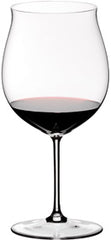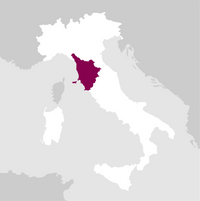描述
L’Apparita was Tuscany’s first pure Merlot and has been a cult wine since its very first vintage, in 1985. The small plots that make up the 3.84 hectares of the L’Apparita vineyard are set atop the Vigneto Bellavista hill, at an altitude di 490 metres asl. In 1975 they were planted with Canaiolo and Malvasia Bianca, then grafted over with Merlot clone 342 between 1982 and 1985.
獎項
詳細資訊

香水

顏色

味道
服務於:
16 - 18 °C.
長壽:
15 - 25 years
醒酒時間:
1 hour

搭配
- 創業年份: 1976
- 釀酒師: Marco Pallanti
- 生產的瓶子: 320.000
- 公頃: 75
To date, Castello di Ama owns and manages about 75 hectares of vineyards and 40 hectares of olive groves, relying on the work of more than 60 people. The role of general manager and oenologist is held continuously by Marco Pallanti, who served, between 2006 and 2012, as President of the Chianti Classico Consortium, bringing the contribution of the creation of the 'Gran Selezione' category with the aim of highlighting the extraordinary quality and diversity of the region's wines. 閱讀更多


| 名称 | Castello di Ama l'Apparita 2021 |
|---|---|
| 类型 | Red green still |
| 葡萄酒名称 | Toscana IGT |
| 年份 | 2021 |
| 容量 | 0,75 l |
| 酒精度 | 14.5% 按體積 |
| 葡萄品种 | 100% Merlot |
| 国家 | Italy |
| 产地 | Tuscany |
| 供应商 | Castello di Ama |
| 产地 | Gaiole in Chianti (Siena). |
| 气候 | Altitude: 490 m. a.s.l. Exposure: North – South. |
| 土壤成分 | Limestone with a prevalence of clays. |
| 栽培系统 | Open lyre. |
| 酿酒工艺 | Fermentation was started using ambient yeasts in steel tanks at a controlled temperature of 30–33 °C, with manual pumpovers and total cuvaison of 25 days. After first racking, the wine was transferred to barriques for malolactic fermentation. |
| 陈酿 | After malolactic fermentation, the wine spent 18 months in fine-grain oak barriques, of which 50% were new and the rest were second passage. The wine was bottled on 21 September 2013, producing 6,840 standard Bordeaux bottles, 210 magnums, 40 Jeroboams, and 20 Salmanazars. |
| 克/升/升 (LPH) | 3.47 |
| 干提取物 | 28.9 gr/L |





